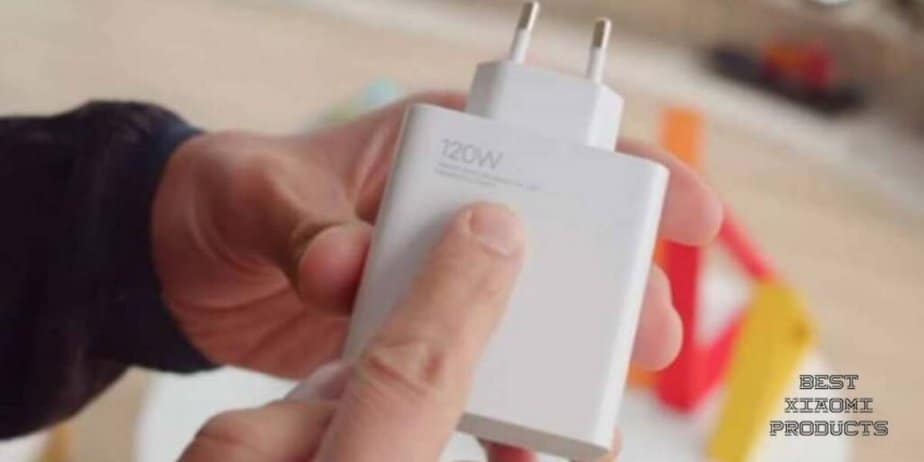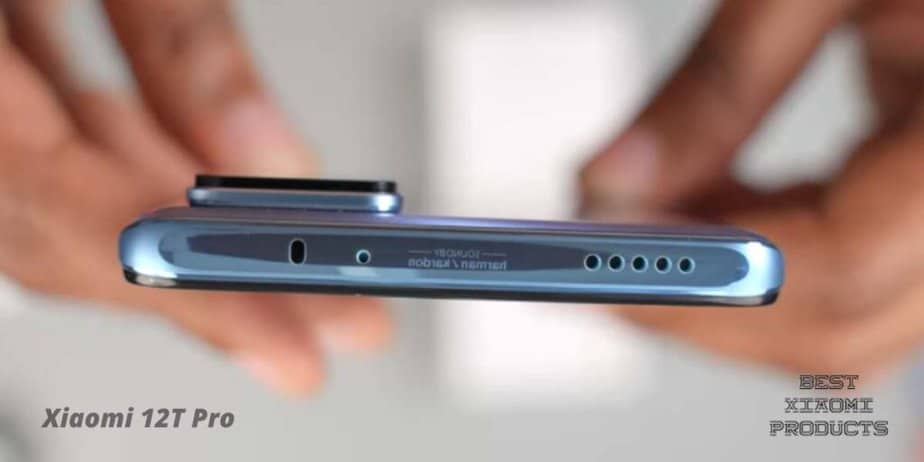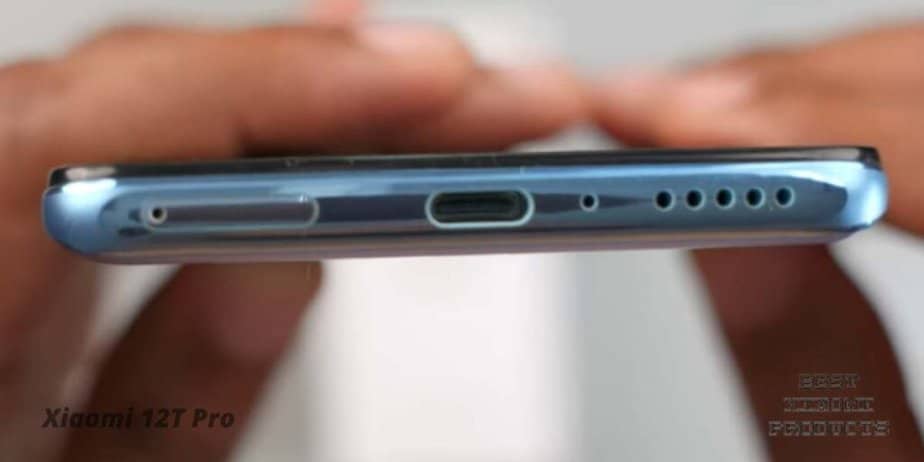Are you ready for an exciting showdown between two of Xiaomi’s most impressive devices? We’re about to compare the Xiaomi Poco F4 GT and the Xiaomi 12T Pro in a battle for the title of ultimate smartphone champion.
It’s like watching two heavyweight contenders step into the ring, each with their own unique strengths and weaknesses. On one side, we have the Poco F4 GT, a phone that packs a punch with its lightning-fast performance and sleek design.
And on the other side, we have the 12T Pro, a device that’s all about maximizing your user experience with top-of-the-line features and cutting-edge technology.
But who will come out on top? Which phone will reign supreme? Will it be the Poco F4 GT with its impressive gaming capabilities and exceptional battery life, or will the 12T Pro take the crown with its stunning display and advanced camera features?

Get ready to buckle up and join us on this ride as we compare these two amazing devices and help you decide which one is the right fit for you. Let’s get started!
Xiaomi Poco F4 GT vs Xiaomi 12T Pro
Highlights of the Xiaomi Poco F4 GT 5G
Super Fast Processor – The processor in the Poco F4 GT 5G is one of the latest and fastest processing chips from Qualcomm. I personally loved the speed and fluid response of the Snapdragon 8 Gen 1 and it’s a fitting chipset to use in a smartphone designed for entertainment.
God of Fast Charging – One of the best highlights of the F4 GT 5G is that it’s equipped with 120W fast charging capabilities that can get the phone powered up from 0-100% in under 17 minutes. It comes with Power Delivery 3.0 and Quick Charge 3+.
Crystal Clear Display – Equipped with a large 6.67-inch AMOLED display, the Poco F4 GT 5G delivers crystal clear visuals that are bright and colorful. Gaming is a breeze on the F4 GT as the display supports 120Hz and is fluid when it comes to watching movies or playing high frame rate games like Call of Duty or PuBG.
Highlights of the Xiaomi 12T Pro

Powerful Performance: The Xiaomi 12T Pro is equipped with the latest Qualcomm Snapdragon 8+ Gen 1 processor, making it one of the most powerful smartphones on the market. This would enable the device to handle intensive tasks such as gaming, video editing, and multitasking with ease.
Advanced Camera System: The Xiaomi 12T Pro features a 200MP triple camera setup on the back. This camera system deliver stunning photos and videos in a variety of lighting conditions.
High-Refresh-Rate Display: The Xiaomi 12T Pro has a high-refresh-rate display with a refresh rate of 120Hz and it provides a smoother and more responsive experience when scrolling through content, playing games, and navigating the user interface.
Xiaomi Poco F4 GT vs Xiaomi 12T Pro: Design and Display
Let’s start with the design. Both phones have a sleek and modern look, but they do have some differences. The Poco F4 GT has a unique design that features a circular camera module and a slightly curved back panel that makes it comfortable to hold. The phone also has a side-mounted fingerprint scanner for easy access.
On the other hand, the Xiaomi 12T Pro has a more traditional design with a rectangular camera module and a flat back panel. The phone also has an under-display fingerprint scanner for added security.
When it comes to the display, both phones offer impressive specs. The Poco F4 GT boasts a 6.67-inch Full HD+ AMOLED display with a 120Hz refresh rate, which makes for smooth scrolling and fluid animations. The Xiaomi 12T Pro, on the other hand, has a similar 6.67-inch Full HD+ AMOLED display with a 120Hz refresh rate as well.
Both displays are bright and vibrant, making for a great viewing experience whether you’re watching videos or scrolling through social media.
there’s not much difference in terms of the placement of the selfie camera as both devices have a pin-hole cutout at the top of the screen to house its 20MP front camera.
Another factor to consider when it comes to the display is the resolution. While both phones offer Full HD+ resolution, the Xiaomi 12T Pro has a slightly higher pixel density due to its higher resolution. This may be a consideration for users who prioritize sharpness and clarity in their display.
Overall, both phones have a lot to offer when it comes to design and display. The Poco F4 GT has a unique design with a comfortable grip and a punch-hole cutout, while the Xiaomi 12T Pro has a more traditional design and an under-display fingerprint scanner.
When it comes to the display, both phones offer impressive specs with a 120Hz refresh rate, but the Xiaomi 12T Pro has a slightly higher pixel density.
Xiaomi Poco F4 GT vs Xiaomi 12T Pro: Performance and Battery Life
Both phones pack a serious punch with their powerful processors. The Poco F4 GT is equipped with a Qualcomm SM8450 Snapdragon 8 Gen 1 chipset, which is known for its exceptional performance and efficiency. The phone also has up to 8GB/12GB of RAM and up to 256GB of storage, making it a great choice for heavy multitasking and storage-intensive apps.
The Xiaomi 12T Pro, on the other hand, is powered by a Qualcomm SM8475 Snapdragon 8+ Gen 1 chipset, which is also a top-of-the-line processor known for its speed and power. The phone comes with up to 12GB of RAM and up to 256GB of storage, making it a great choice for users who need even more processing power.
When it comes to gaming, the Poco F4 GT has a slight edge thanks to its gaming-focused features such as its Maglev triggers, which are physical buttons on the side of the phone that provide tactile feedback for gaming. The phone also has a unique cooling system that helps keep the phone from overheating during intense gaming sessions.
Both phones also have impressive battery life, with the Poco F4 GT packing a 4700mAh battery and the Xiaomi 12T Pro packing a 5,000mAh battery. With moderate use, both phones can easily last a full day without needing to be charged. When it comes to charging, both phones support 120W wired fast charging.

One potential downside to both is that they do not support wireless charging, which may be a consideration for users who prefer the convenience of wireless charging.
Overall, both phones offer exceptional performance and battery life, making them great choices for power users and gamers alike. The Poco F4 GT has a slight edge when it comes to gaming features, while the Xiaomi 12T Pro has a more powerful processor and more RAM.
Xiaomi Poco F4 GT vs Xiaomi 12T Pro: Camera and Audio Quality
The Poco F4 GT has a triple rear camera setup, including a 64MP primary camera, an 8MP ultra-wide camera, and a 2MP macro camera. The phone also has a 20MP front camera for selfies and video calls.
The Xiaomi 12T Pro, on the other hand, has a triple rear camera setup as well, but with a slightly different configuration. The phone has a 200MP primary camera, a 8MP ultra-wide camera, and a 2MP macro camera. It also has a 20MP front camera for selfies and video calls.

In terms of camera performance, both phones are capable of capturing stunning photos with great detail and color accuracy. The Xiaomi 12T Pro has a slight edge in terms of camera quality due to its higher resolution primary camera, but the difference may not be noticeable to the average user.
One notable difference between the two phones is their video capabilities. The Poco F4 GT is capable of shooting 4K video at 60fps, while the Xiaomi 12T Pro can shoot 8K video at 30fps. This may be a consideration for users who prioritize video quality in their smartphone camera.

Moving on to audio quality, both phones offer impressive sound output with dual stereo speakers. The Poco F4 GT has a slightly louder speaker output than the Xiaomi 12T Pro, making it a great choice for users who enjoy listening to music or watching videos without headphones.
However, the Xiaomi 12T Pro has an upper hand in terms of audio quality due to its support for Hi-Res Audio and Dolby Atmos. This means that the phone is capable of delivering a more immersive audio experience with greater clarity and depth.
Xiaomi Poco F4 GT vs Xiaomi 12T Pro: Specs Comparison Table
| Xiaomi Poco M4 Pro 5G | Xiaomi 12T Pro | |
| Announced | 2022, April | 2022, October |
| Status | Released | Released |
| Display | ||
| Type | AMOLED | AMOLED |
| Size | 6.67-inch, 120Hz, 800 nits | 6.67-inch, 120Hz, 900 nits |
| Resolution | 1080 * 2400p, 20:9 ratio | 1220 x 2712 pixels, 20:9 ratio |
| Protection | Gorilla Glass Victus | Corning Gorilla Glass 5 |
| Body | ||
| Dimensions | 162.5 x 76.7 x 8.5 mm (6.40 x 3.02 x 0.33 in) | 163.1 x 75.9 x 8.6 mm (6.42 x 2.99 x 0.34 in) |
| Weight | 210g | 205g |
| Water Resistance | ||
| SIM Slot | Dual SIM(Nano-SIM, dual stand-by) | Nano-SIM and eSIM or Dual SIM (Nano-SIM, dual stand-by) |
| Expandable Storage | No | No |
| Colors | Black, Grey, Silver | Black, Silver, Blue |
| Internals | ||
| Processor | Qualcomm SM8450 Snapdragon 8 Gen 1 5G, Octa-core (1×3.00 GHz Cortex-X2 & 3×2.50 GHz Cortex-A710 & 4×1.80 GHz Cortex-A510) Processor | Qualcomm SM8475 Snapdragon 8+ Gen 1 (4 nm) Octa-core (1×3.19 GHz Cortex-X2 & 3×2.75 GHz Cortex-A710 & 4×2.0 GHz Cortex-A510) |
| Graphics | Adreno 730 | Adreno 730 |
| RAM | 8GB / 12GB | 8GB / 12GB |
| Storage | 128GB / 256GB | 128GB / 256GB |
| Cameras | ||
| Rear Cameras | Triple Camera: 64 MP + 8 MP + 2 MP | 200 MP, f/1.7, (wide), 1/1.22″, 0.64µm, PDAF, OIS8 MP, f/2.2, 120˚ (ultrawide), 1/4″, 1.12µm2 MP, f/2.4, (macro) |
| Camera Features | 4K@30fps, 1080p@30/60/120/240fps, 720p@960fps, gyro-EIS | 8K@24fps, 4K@30/60fps, 1080p@30/60/120/240fps, HDR10+ |
| Front Camera | Single: 20 MP (Wide) | 20 MP, f/2.2, (wide), 1/3.47″, 0.8µm |
| Camera Features | LED Flash, HDR, Panorama | HDR, panorama |
| Software | ||
| Android | Android 12 | Android 12 |
| MIUI | MIUI 13 | MIUI 13 |
| Connectivity | ||
| Network | 5G FR1: 450 MHz – 6 GHz , 5G FR2: 24.25 GHz – 52.6 GHzSpeed: HSPA 42.2/5.76 Mbps, LTE-A (CA), 5G | |
| WLAN | Wi-Fi 802.11 a/b/g/n/ac/6, dual-band, Wi-Fi Direct, hotspot | Wi-Fi 802.11 a/b/g/n/ac/6, dual-band, Wi-Fi Direct |
| Bluetooth | v5.2 with A2DP, LE | 5.2, A2DP, LE, aptX HD |
| GPS | Yes + dual-band A-GPS, GLONASS, GALILEO, BDS, QZSS, NavIC | GPS (L1+L5), GLONASS (L1), BDS (B1I+B1c+B2a), GALILEO (E1+E5a), QZSS (L1+L5), NavIC (L5) |
| NFC | No | Yes (market/region dependent) |
| Infrared Port | No | Yes |
| Radio | No | No |
| USB | USB: microUSB v2.0 Type-C | USB Type-C 2.0, OTG |
| Battery | ||
| Capacity | 4700 mAh Li-Po | Li-Po 5000 mAh |
| Charging Technology | Fast Charging 120W | 120W wired |
| Sound | ||
| Loudspeaker | Yes, with stereo speakers (4 speakers) | Yes, with stereo speakers, Tuned by Harman Kardon |
| 3.5mm Jack | No | No |
| Features | ||
| Sensors | Fingerprint (side-mounted), accelerometer, gyro, compass, color spectrum, Virtual proximity sensing | Fingerprint (under display, optical), accelerometer, gyro, proximity, compass, color spectrum |
Xiaomi Poco F4 GT 5G Pros and Cons
Pros
- Exceptional display with bright and vibrant colors
- Shoulder trigger buttons are a great addition
- Fastest fast charging we’ve seen in a while
- Flagship-grade performance
Cons
- Battery could have been larger
- Shoulder trigger buttons are overly sensitive
- MIUI should have been phased out and stock Android would have been better
Xiaomi 12T Pro 5G Pros and Cons
Pros:
- Excellent camera performance with a 1200MP main camera and other high-quality lenses
- Powerful Snapdragon 8+ Gen 1 chipset that delivers smooth and fast performance
- Large and vivid 6.67-inch AMOLED display with a 120Hz refresh rate for smooth scrolling and gaming
- Decent battery life with 5,000mAh capacity and 120W fast charging support
- 5G support for fast internet connectivity
Cons:
- No expandable storage, so you’re limited to the internal storage
- No wireless charging support, which may be a downside for some users
- MIUI software can be overwhelming for users who prefer a more minimalist interface
- No headphone jack, so you’ll need to use Bluetooth earphones or a dongle.
Also Read:
- Xiaomi Smart Alarm Clock Review 2023 | Xiaomi AI Smart Clock vs Normal Clocks
- How to Set Up and Use a Xiaomi Enchen Blackstone 3
- Best Xiaomi Security Camera 2023 | CCTV Cameras from Xiaomi

Hi there, I came from a small town from Germany. Being a Xiaomi fan, I preach when I learn. Xiaomi fan, xiaomi scooter, Xiaomi phone, and even Xiaomi watch – Amazfit. I am so into Xiaomi ecosystem. Ping me if you need any help on MI products.
Table of Contents







